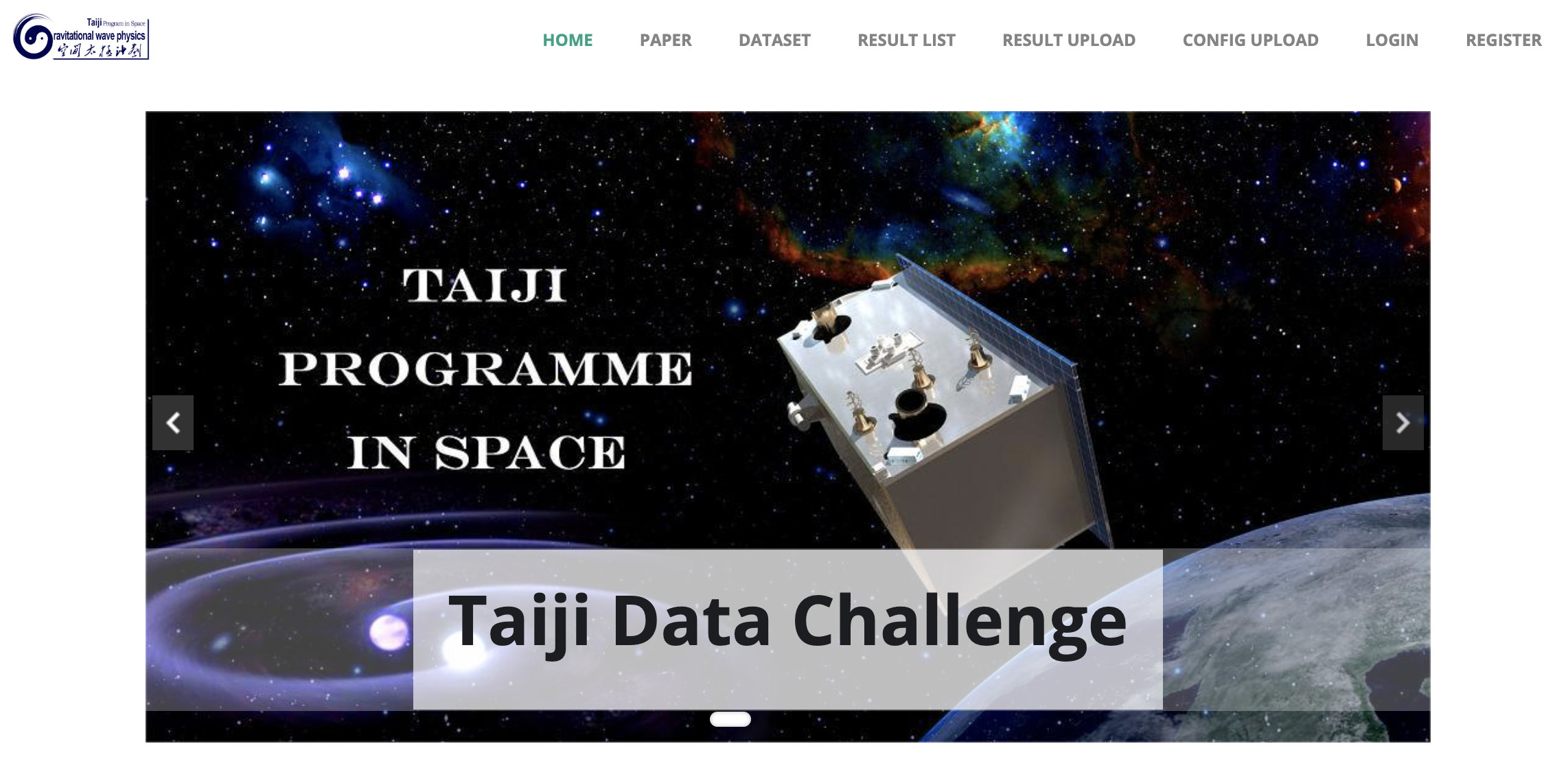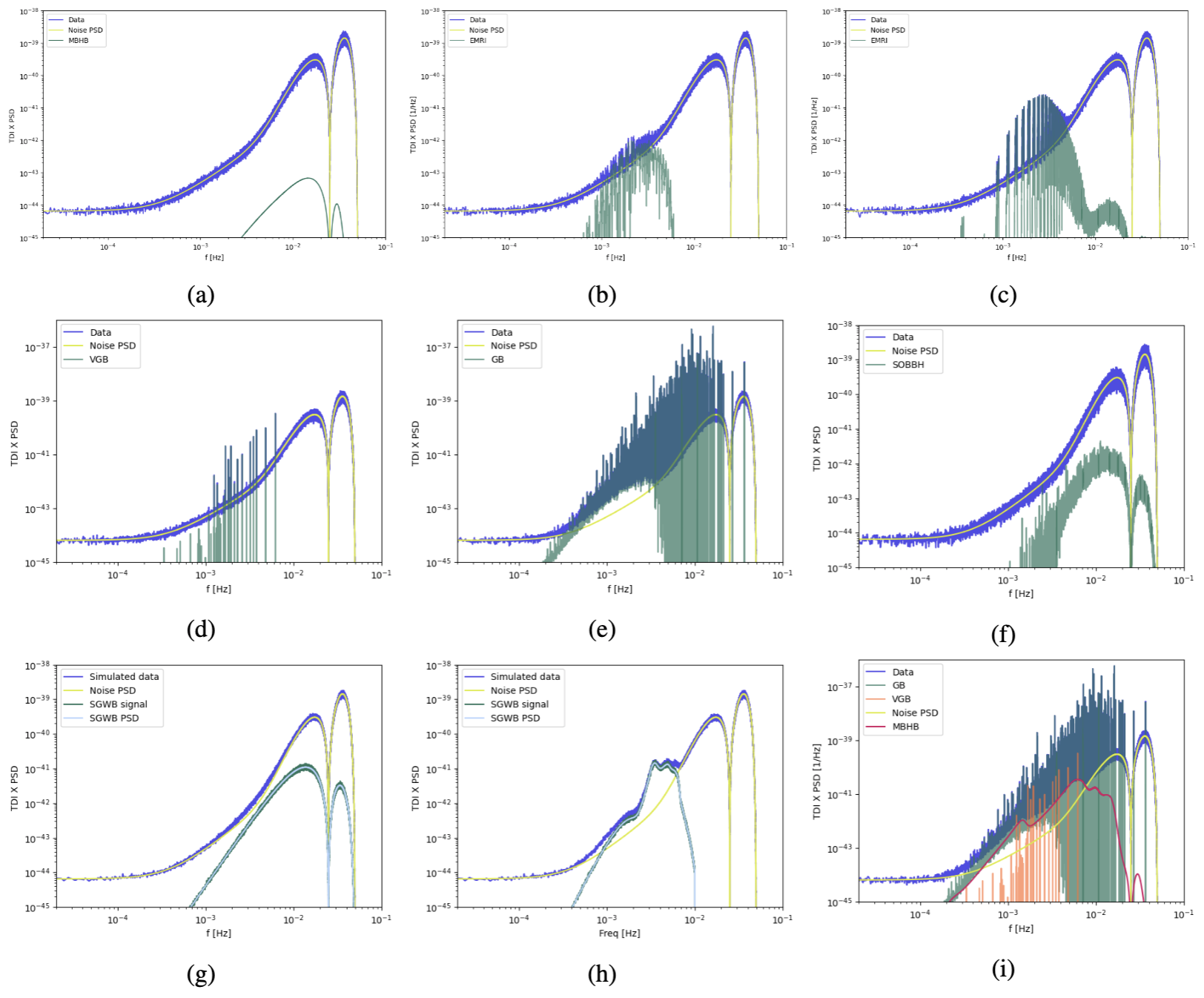Welcome to the official repository of the Taiji Data Challenge! This repository hosts the data generation code. For more details about the challenge, please refer to the paper: https://link.springer.com/article/10.1007/s11467-023-1318-y.
The direct observation of gravitational waves (GWs) opens a new window for exploring new physics from quanta to cosmos and provides a new tool for probing the evolution of universe. GWs detection in space covers a broad spectrum ranging over more than four orders of magnitude and enables us to study rich physical and astronomical phenomena. Taiji is a proposed space-based GW detection mission that will be launched in the 2030s. Taiji will be exposed to numerous overlapping and persistent GW signals buried in the foreground and background, posing various data analysis challenges. In order to empower potential scientific discoveries, the Mock Laser Interferometer Space Antenna (LISA) data challenge and the LISA data challenge (LDC) were developed. While LDC provides a baseline framework, the first LDC needs to be updated with more realistic simulations and adjusted detector responses for Taiji’s constellation. In this paper, we review the scientific objectives and the roadmap for Taiji, as well as the technical difficulties in data analysis and the data generation strategy, and present the associated data challenges. In contrast to LDC, we utilize second-order Keplerian orbit and second-generation time delay interferometry techniques. Additionally, we employ a new model for the extreme-mass-ratio inspiral waveform and stochastic GW background spectrum, which enables us to test general relativity and measure the non-Gaussianity of curvature perturbations. Furthermore, we present a comprehensive showcase of parameter estimation using a toy dataset. This showcase not only demonstrates the scientific potential of the Taiji data challenge but also serves to validate the effectiveness of the pipeline. As the first data challenge for Taiji, we aim to build an open ground for data analysis related to Taiji sources and sciences.
For more detailed information about the challenge, guidelines, and announcements, please visit our Official Website.
Frequency domain data of all the TDC datasets.
MCMC posterior corner plot for the toy dataset. The MCMC posterior analysis is conducted on our toy dataset.
- Setup the conda environment:
conda create -n taiji -c conda-forge gcc_linux-64 gxx_linux-64 wget gsl fftw lapack=3.6.1 hdf5 numpy Cython scipy jupyter ipython matplotlib python=3.7 --yes conda activate taiji
- Install others dependencies:
-
pip install bidict tqdm h5py requests astropy h5py xarray
- (Optional) Install
cupyfollowing instructions from https://docs.cupy.dev/en/stable/install.html
-
- Install FastEMRIWaveforms and lisa-on-gpu.
git clone https://github.com/BlackHolePerturbationToolkit/FastEMRIWaveforms.git cd FastEMRIWaveforms python setup.py install cd ../ git clone https://github.com/mikekatz04/lisa-on-gpu.git cd lisa-on-gpu python setup.py install cd ../
- Clone the repo
git clone https://github.com/AI-HPC-Research-Team/Taiji_Data_Challenge.git cd Taiji_Data_Challenge - Run the demo:
python demo.py
If you find our code useful, please consider citing the following papers:
@article{ren_taiji_2023,
title = {Taiji Data Challenge for Exploring Gravitational Wave Universe},
author = {Ren, Zhixiang and Zhao, Tianyu and Cao, Zhoujian and Guo, Zong-Kuan and Han, Wen-Biao and Jin, Hong-Bo and Wu, Yue-Liang},
year = {2023},
month = dec,
journal = {Frontiers of Physics},
volume = {18},
number = {6},
pages = {64302},
doi = {10.1007/s11467-023-1318-y},
language = {en}
}We would like to express our gratitude to the following repositories for their invaluable contributions to this work:

](https://opensource.org/licenses/MIT)




